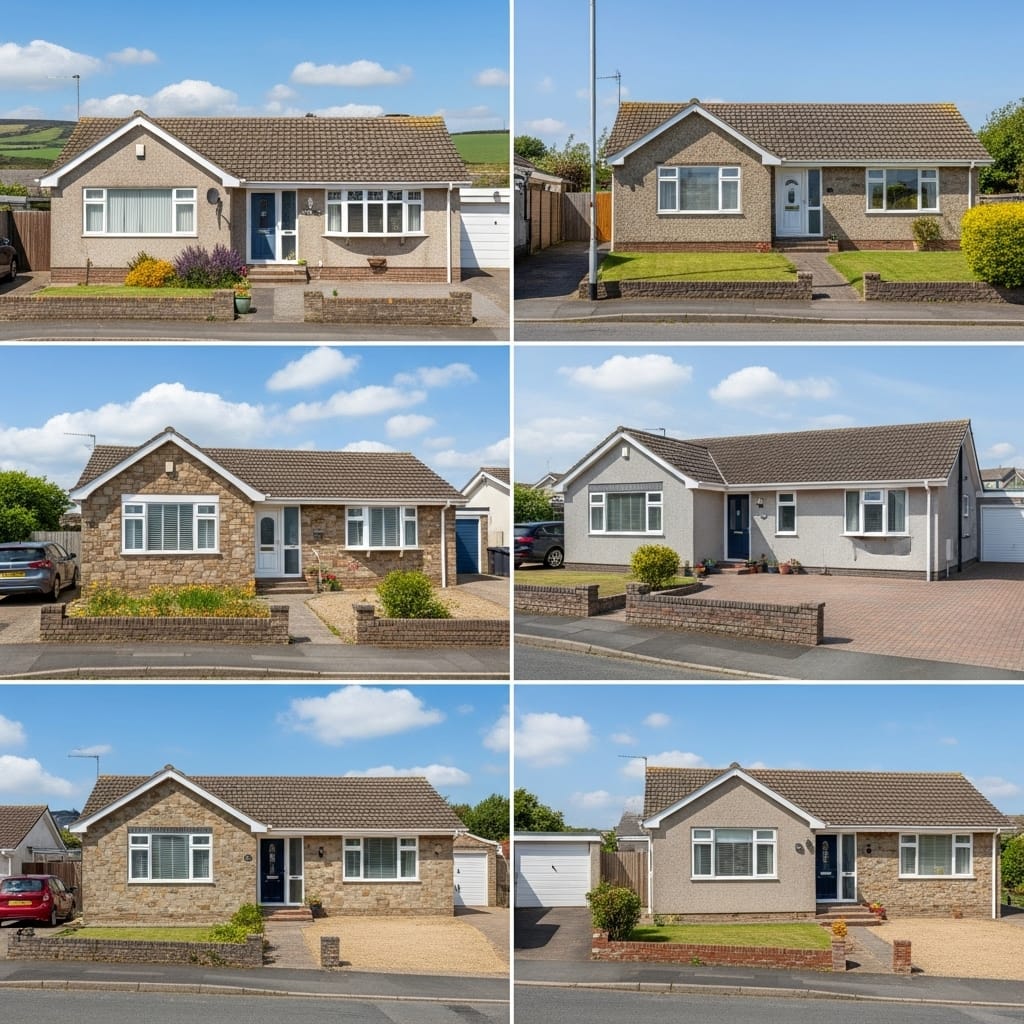
The Enduring Allure of Single-Storey Living: A Comprehensive Guide to Bungalows for Sale in the UK
In the rich tapestry of British housing, amongst the stoic Victorian terraces and the neat suburban semis, lies a property type that holds a unique and enduring appeal: the bungalow. For many, the word conjures images of quiet retirement, seaside towns, and a slower, more deliberate pace of life. While it certainly excels at providing a comfortable haven for the golden years, the humble bungalow is experiencing a remarkable renaissance, capturing the imagination of a much broader range of buyers. From young families seeking lateral living space to design-savvy individuals looking for a renovation project with character, the demand for bungalows for sale across the United Kingdom is a testament to their timeless charm and surprising versatility.
This guide delves deep into the world of the British bungalow, exploring its history, its many forms, and the powerful reasons behind its perennial popularity. We’ll navigate the practicalities of the market, debunk some outdated myths, and paint a picture of the unique lifestyle that awaits those who choose to embrace single-storey living. If you’ve ever found yourself dreaming of a home without stairs, a garden that wraps around you, and a sense of space and privacy that is hard to find, then the bungalow might just be your perfect match.
The Undeniable Charm: Why Are Bungalows So Perennially Popular?
The appeal of the bungalow isn’t just a fleeting trend; it’s rooted in fundamental desires for comfort, security, and a connection to our surroundings. The reasons people actively search for and fall in love with these properties are as practical as they are emotional.

Accessibility and Future-Proofing Your Home
The most celebrated advantage of a bungalow is, of course, its single-storey layout. The absence of stairs is a game-changer for a multitude of buyers. For those with mobility issues, whether due to age, disability, or temporary injury, a bungalow offers freedom and independence. Every room is on one level, eliminating daily obstacles and creating a safer living environment. But this isn’t just a consideration for the present. Increasingly, buyers of all ages are thinking about ‘future-proofing’ their homes. Purchasing a bungalow is a proactive decision to secure a ‘forever home,’ a place where one can live comfortably and self-sufficiently for decades to come, without the looming prospect of having to move when stairs become a challenge. This peace of mind is a powerful motivator in the property market.
A Sanctuary of Privacy and Seclusion
Bungalows, by their very nature, often afford a greater degree of privacy than their multi-storey counterparts. They are frequently built on more generous plots of land, set back from the road, and detached from their neighbours. This creates a natural buffer from the hustle and bustle of the outside world. There are no upstairs windows directly overlooking your garden, and you’re less likely to be living in the shadow of an adjacent property. This sense of seclusion fosters a feeling of being in your own private sanctuary, a key selling point for those who value peace and quiet.
A Seamless Connection to the Outdoors
One of the most joyful aspects of bungalow living is the effortless flow between the indoor and outdoor spaces. With living areas and bedrooms on the ground floor, the garden becomes a true extension of the home. It’s common for multiple rooms to have direct access to a patio or lawn. Imagine waking up and stepping straight from your bedroom onto a sun-drenched terrace with your morning coffee, or throwing open bi-fold doors from the lounge to host a seamless garden party. This constant, easy access to nature is a huge draw for keen gardeners, families with young children who want a safe and visible play area, and anyone who simply loves the alfresco lifestyle.
The Surprising Illusion of Space
A common misconception is that bungalows are inherently small or cramped. This couldn’t be further from the truth. While the footprint might be similar to a two-storey house, the internal experience can feel vastly more spacious. The absence of a staircase frees up valuable square footage on the ground floor, allowing for more generous hallways and living areas. Furthermore, many bungalows, particularly those from the mid-20th century, boast the potential for vaulted ceilings. By opening up the roof space, a standard room can be transformed into a dramatic, light-filled area that feels incredibly open and airy, a feature that adds both character and a premium feel.
A Tour of Bungalow Types: More Than Just a Single Storey
While the core concept is a single-level dwelling, the term ‘bungalow’ encompasses several variations. Understanding these distinctions is key when searching for the perfect property to suit your needs and budget.
The Classic Detached Bungalow
This is the archetypal bungalow: a standalone, single-storey property sitting on its own plot. It offers the most privacy and is the most sought-after type. They range from compact two-bedroom homes, perfect for downsizing, to sprawling, multi-bedroom properties that can comfortably accommodate a large family. These are often found in desirable suburban, rural, or coastal locations.
Chalet and Dormer Bungalows
These clever hybrids offer a compromise for those who need a little more space than a true bungalow but still want the primary living areas on one floor. A chalet bungalow is designed and built with rooms in the roof space, typically featuring sloping ceilings and windows set into the roof, known as dormer windows. A dormer bungalow, similarly, has had its loft converted to create first-floor accommodation. This often results in a property with a large master suite upstairs, while guest bedrooms, bathrooms, and all living spaces remain on the ground floor. They are an excellent solution for families who want to keep parents or guests on a separate level.
Semi-Detached and Terraced Bungalows
While less common, you will find semi-detached and even terraced bungalows in certain parts of the UK. These are often found in purpose-built retirement villages or on post-war housing estates. They offer a more affordable entry point into bungalow living and can foster a strong sense of community, though they may offer slightly less privacy than their detached counterparts.
The Practicalities of Buying a Bungalow: A UK Market Guide
Entering the market for a bungalow requires a specific understanding of its unique supply-and-demand dynamics. They are a prized asset, and being prepared can make all the difference.
The Scarcity Factor: High Demand, Low Supply
One of the fundamental truths of the UK bungalow market is their scarcity. For decades, developers have favoured building upwards to maximise the profit from a parcel of land. It simply makes more financial sense to build a two or three-storey house than a single-storey bungalow on the same footprint. This has led to a dwindling stock of existing bungalows and very few new ones being built. Compounded by an ageing population and the increasing desire for single-storey living, this has created a classic high-demand, low-supply scenario. Consequently, bungalows often command a premium price and can hold their value exceptionally well, making them a solid long-term investment.
Location, Location, Location
Bungalows are not evenly distributed across the country. They are most commonly found in areas that saw significant development in the 20th century, particularly from the 1930s to the 1970s. Coastal towns in regions like Devon, Cornwall, Dorset, and Norfolk have a high concentration of bungalows, as do many rural villages and the leafy suburbs of major towns and cities. When searching, it pays to look in these traditionally popular retirement areas, as they often have the greatest choice.
What to Look For During a Viewing
Viewing a bungalow requires a keen eye for specific details. Beyond the standard property checks, pay close attention to the following:
- The Roof: A bungalow’s roof has a much larger surface area relative to its internal space than a house. It’s a critical and expensive component. Look for any signs of sagging, missing or cracked tiles, and check for water stains on the ceilings inside.
- The Plot and Potential: Assess the size and orientation of the garden. Is there space to extend outwards without sacrificing too much outdoor space? Does the property get good natural light throughout the day?
- Internal Layout and Flow: Does the layout make sense? Older bungalows can sometimes have awkward configurations. Consider if it works for you now, and if there is scope to knock through walls to create a more modern, open-plan feel.
- Renovation Scope: The potential to modernise is a huge draw. Look at the loft space – is it ripe for a dormer conversion (subject to planning permission)? Could you add a conservatory or a rear extension to create a stunning kitchen-diner?
- Signs of Damp: As with any older property, check thoroughly for signs of damp, paying particular attention to the base of the walls and around windows.
Living the Bungalow Life: A Lifestyle of Comfort and Convenience
Choosing a bungalow is about more than just the bricks and mortar; it’s about embracing a particular way of life. It’s a lifestyle defined by ease, comfort, and a closer connection to your home and garden.
The day-to-day practicalities are simpler. Maintenance is easier; there are no daunting staircases to vacuum, and cleaning windows is a straightforward ground-level task. Exterior painting and gutter clearing are also far less complicated and costly. In terms of energy, while a larger roof can be a source of heat loss, a well-insulated, compact bungalow can be incredibly efficient and cost-effective to heat, with warmth circulating easily on a single level.
Beyond the practical, there’s a tangible sense of safety and security. With all rooms on one floor, you are always within earshot of the front door or any unusual noises. This provides immense peace of mind, particularly for those living alone or with young children.
The bungalow, once seen as a modest and perhaps unexciting choice, has truly come into its own. It has shed its outdated image and is now recognised as a smart, versatile, and highly desirable property. It caters not just to the downsizer, but to the innovator, the family, the gardener, and the forward-planner. It offers a unique blend of privacy, potential, and practicality that is difficult to replicate. The search for bungalows for sale is a search for a better quality of life—a life with fewer obstacles and more simple pleasures. It is a testament to the enduring idea that sometimes, the very best things in life are all on one level.







